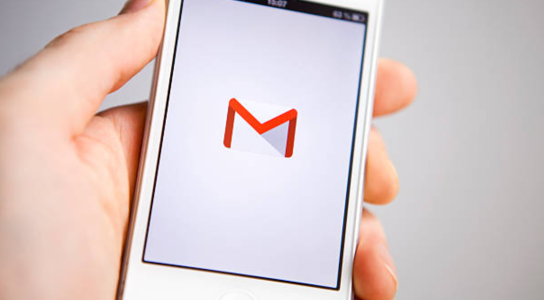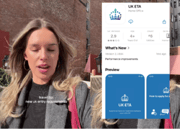Switching from this popular mail app may prove huge mistake—shield yourself from cyber attacks!
By
Gian T
- Replies 2
In today's interconnected world, digital communication is vital in both personal and professional life.
A widely used platform has become a key tool for billions. However, it also attracts persistent security threats.
While concerns about safety are valid, switching to another option may not be the simple solution some might expect.
Recognising that all email users, regardless of their chosen platform, are susceptible to advanced cyber threats is important.
Hackers and cybercriminals are not picky; they target users everywhere, and a change in email provider won't necessarily shield you from their attacks.
Microsoft's Outlook, for example, is also a hot target, especially as a potential gateway to corporate network breaches.
The truth is phishing attacks are platform-agnostic. They will find you whether you're using Gmail, Outlook, or any other service.
While there are email platforms that prioritise security and privacy, such as Proton Mail, they are not foolproof.
No service can prevent a user from clicking on a malicious link or falling victim to a phishing scam.
If switching to a different email app lulls you into a false sense of security, that's a dangerous mindset to have.
You might be surprised to learn that Gmail is quite secure despite being a popular target for attacks.
Google has invested heavily in AI technology to bolster Gmail's cyber defences.
Andy Wen, Gmail’s senior director of product management, has highlighted the introduction of a new large language model explicitly trained to detect phishing, malware, and spam.
This model has effectively blocked 20 per cent more spam and phishing attempts than before its implementation.
Moreover, Gmail has implemented a supervisory AI that assesses hundreds of threat signals when flagging a potentially harmful message.
It then deploys the most appropriate protection measures to safeguard users.
These advancements have had a tangible impact.
Google reported a 65 per cent reduction in unauthenticated emails sent to Gmail users within six months of introducing strict sender authentication protocols for bulk emails.
Over a year, this resulted in 265 billion fewer unauthenticated messages.
The industry has taken notice of Gmail's efforts.
EasyDMARC, an organisation that helps with sender authentication, found that 77 per cent of surveyed IT decision-makers were influenced by Gmail's policy to adopt DMARC, and 87 per cent supported expanding authentication requirements to reduce phishing and spam risks.
Switching from Gmail to another provider doesn't eliminate the security problem; it just relocates it.
Believing that you're immune to attacks by changing apps is a misconception.
Heed Google's advice on avoiding phishing attacks: be wary of dangerous messages, unsafe content, or deceptive websites.
If you receive a warning from Google, do not click on links, download attachments, or enter personal information.
Even without a warning, exercise caution with links, files, and personal info from unknown or untrustworthy sources.
Is Gmail flawless? Certainly not. Are there valid reasons to consider alternatives? Absolutely.
The decision to trust Google with your email is a personal one.
However, switching to another app solely because of phishing attacks doesn't make much sense.
Gmail has proactively protected its users from phishing risks and deserves recognition for its efforts.
In other news, Google's AI model, Gemini, launched new features to assist users with email writing and management in Gmail and collaboration in Google Workspace apps.
These tools are accessible to selected paid Google Workspace and Google One AI Premium subscribers. You can read more about it here.
 Can you spot phishing scams, or do you need more awareness? Have you ever thought about changing email providers for security reasons? Feel free to share your thoughts and experiences in the comments below.
Can you spot phishing scams, or do you need more awareness? Have you ever thought about changing email providers for security reasons? Feel free to share your thoughts and experiences in the comments below.
A widely used platform has become a key tool for billions. However, it also attracts persistent security threats.
While concerns about safety are valid, switching to another option may not be the simple solution some might expect.
Recognising that all email users, regardless of their chosen platform, are susceptible to advanced cyber threats is important.
Hackers and cybercriminals are not picky; they target users everywhere, and a change in email provider won't necessarily shield you from their attacks.
Microsoft's Outlook, for example, is also a hot target, especially as a potential gateway to corporate network breaches.
The truth is phishing attacks are platform-agnostic. They will find you whether you're using Gmail, Outlook, or any other service.
While there are email platforms that prioritise security and privacy, such as Proton Mail, they are not foolproof.
No service can prevent a user from clicking on a malicious link or falling victim to a phishing scam.
If switching to a different email app lulls you into a false sense of security, that's a dangerous mindset to have.
You might be surprised to learn that Gmail is quite secure despite being a popular target for attacks.
Google has invested heavily in AI technology to bolster Gmail's cyber defences.
Andy Wen, Gmail’s senior director of product management, has highlighted the introduction of a new large language model explicitly trained to detect phishing, malware, and spam.
This model has effectively blocked 20 per cent more spam and phishing attempts than before its implementation.
Moreover, Gmail has implemented a supervisory AI that assesses hundreds of threat signals when flagging a potentially harmful message.
It then deploys the most appropriate protection measures to safeguard users.
These advancements have had a tangible impact.
Google reported a 65 per cent reduction in unauthenticated emails sent to Gmail users within six months of introducing strict sender authentication protocols for bulk emails.
Over a year, this resulted in 265 billion fewer unauthenticated messages.
The industry has taken notice of Gmail's efforts.
EasyDMARC, an organisation that helps with sender authentication, found that 77 per cent of surveyed IT decision-makers were influenced by Gmail's policy to adopt DMARC, and 87 per cent supported expanding authentication requirements to reduce phishing and spam risks.
Switching from Gmail to another provider doesn't eliminate the security problem; it just relocates it.
Believing that you're immune to attacks by changing apps is a misconception.
Heed Google's advice on avoiding phishing attacks: be wary of dangerous messages, unsafe content, or deceptive websites.
If you receive a warning from Google, do not click on links, download attachments, or enter personal information.
Even without a warning, exercise caution with links, files, and personal info from unknown or untrustworthy sources.
Is Gmail flawless? Certainly not. Are there valid reasons to consider alternatives? Absolutely.
The decision to trust Google with your email is a personal one.
However, switching to another app solely because of phishing attacks doesn't make much sense.
Gmail has proactively protected its users from phishing risks and deserves recognition for its efforts.
In other news, Google's AI model, Gemini, launched new features to assist users with email writing and management in Gmail and collaboration in Google Workspace apps.
These tools are accessible to selected paid Google Workspace and Google One AI Premium subscribers. You can read more about it here.
Key Takeaways
- Gmail is under sophisticated and dangerous cyber-attacks but remains a secure platform due to Google’s AI-driven defences.
- Switching email apps won’t necessarily improve security; users must adapt their behaviour to avoid phishing scams.
- Google’s implementation of new AI models and strict sender authentication protocols has significantly decreased spam and phishing emails.
- Despite potential reasons to avoid Gmail, its effectiveness at curbing phishing risks should be recognised, and users should heed security advice provided by Google.








